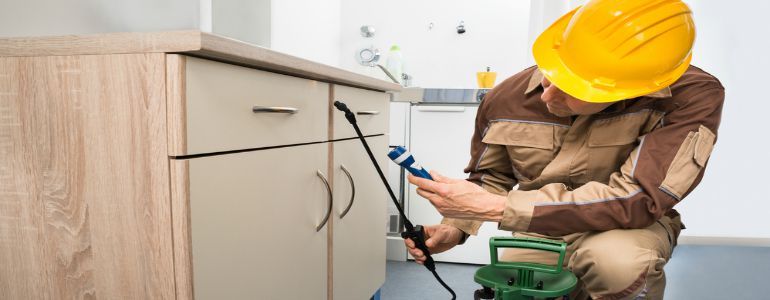Trusted Exterminator Near Me: Your Local Pest Control Service!
Professional Bug Control Techniques for Long-Term Results
In the world of parasite control, attaining continual effectiveness and lasting outcomes calls for a thorough approach that goes beyond plain extermination. Expert pest control strategies envelop a detailed technique that begins with an extensive assessment and analysis, complied with by exact bug recognition to understand their actions patterns. The implementation of Integrated Insect Management (IPM) concepts, combined with eco-conscious treatments, creates the keystone of lasting parasite obliteration. Nevertheless, the true test depends on the ongoing tracking and maintenance of the dealt with locations, ensuring a pest-free environment for the direct future. By delving into the intricacies of these techniques, a deeper understanding of specialist insect control techniques for enduring outcomes emerges.
Assessment and Evaluation
Upon getting in a home for pest control solutions, the preliminary step is a complete evaluation and assessment to recognize the level of the infestation and figure out one of the most reliable therapy plan. Specialist bug control technicians are educated to carefully check out the properties, trying to find indications of parasite task such as droppings, chomp marks, nests, or any type of structural damage. They will additionally analyze the conditions that may be bring in insects, such as food resources, water leaks, or access factors.

Insect Identification and Actions

Moreover, understanding the behavior of the determined bug is vital to executing efficient control procedures. Understanding where parasites nest, what they feed on, and their activity patterns can help pest control experts design strategies to eradicate them efficiently. Some insects may be nighttime, while others are more active during the day. This knowledge allows for the application of therapies at optimum times for optimum performance.
Integrated Parasite Administration (IPM)
Integrated Bug Administration (IPM) techniques combine numerous methods to manage and prevent parasite problems in a sustainable and environmentally pleasant way. pest control. By integrating methods such as organic control, habitat adjustment, adjustment of cultural techniques, and the usage of immune ranges, IPM aims to decrease the usage of chemical pesticides
One of the vital principles of IPM is the focus on prevention. This proactive strategy includes surveillance bug populations consistently to find any possible issues prior to they escalate. By determining pest issues at an early stage, pest control actions can be executed promptly and efficiently.
Moreover, IPM promotes making use of safe pest control approaches whenever possible. This can include using natural predators of the parasites, introducing valuable insects, or utilizing scents to disrupt mating patterns. By lowering reliance on chemical pesticides, IPM not only secures the environment however additionally aids maintain a balance in the environment.
Environmentally-Friendly Therapies
Implementing eco-conscious strategies in pest control procedures can effectively deal with infestations while prioritizing environmental sustainability. Environmentally-friendly therapies concentrate on lessening the effect of insect control methods on ecosystems, non-target organisms, and human wellness.
One more secret aspect of environmentally-friendly therapies is using natural and biodegradable products that damage down rapidly without leaving damaging residues in the setting. Organic insecticides derived from plants like chrysanthemums or neem supply efficient insect control while posing marginal exterminator danger to non-target species. In addition, utilizing approaches like warm therapies or scent traps can target certain insects with accuracy, minimizing the overall ecological impact of parasite control methods.
Recurring Tracking and Upkeep
Regular surveillance and upkeep are essential elements of reliable insect control monitoring. Ongoing tracking plays an essential duty in ensuring that bug problems are discovered very early and dealt with immediately. Normal evaluations by skilled specialists are necessary to determine any type of indicators of parasite task, assess the performance of previous treatments, and make changes to the insect control strategy as required. By keeping track of pest populaces with time, bug control experts can track patterns, prepare for possible issues, and implement preventative procedures to minimize the risk of future problems.
Along with surveillance, maintenance practices are crucial for long-term parasite control success. This includes implementing appropriate sanitation actions to get rid of potential food and water resources for pests, sealing entry indicate avoid parasites from going into the properties, and dealing with any structural concerns that could promote insect problems (pest control). By incorporating recurring monitoring and maintenance right into an integrated bug monitoring technique, organizations can guarantee a pest-free setting and protect their property versus costly damage and health and wellness threats
Conclusion
In final thought, making use of professional insect control strategies such as comprehensive assessment and assessment, accurate insect recognition and understanding of their actions, incorporated pest management methods, environmentally-friendly therapies, and ongoing monitoring and maintenance are crucial for achieving long-term lead to bug control. By carrying out these methods, individuals can effectively manage insect invasions and preserve a pest-free atmosphere in a sustainable way.